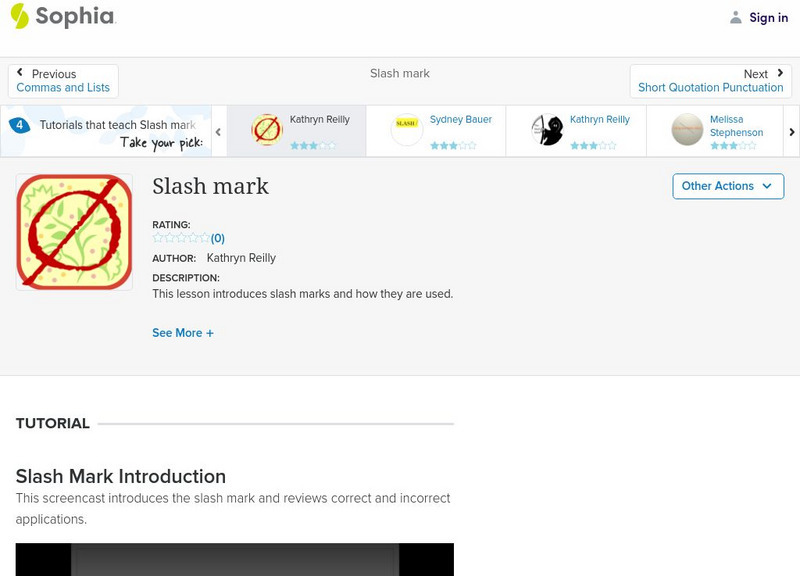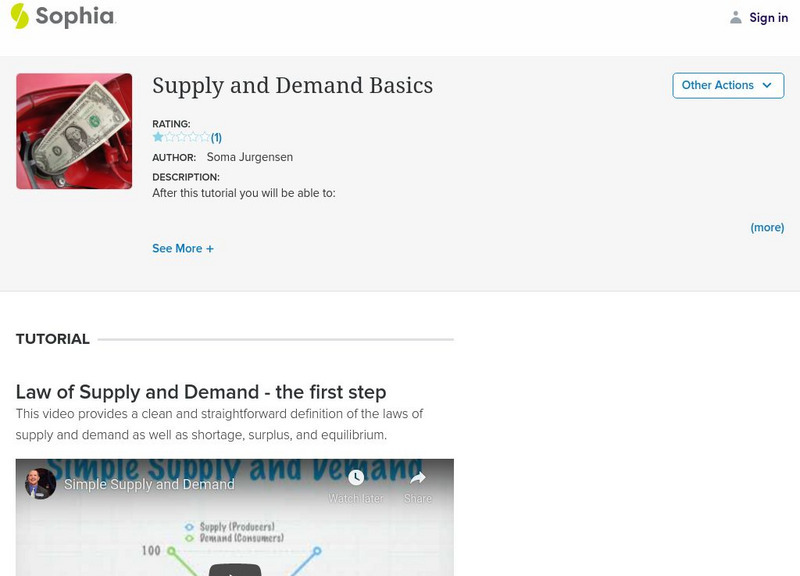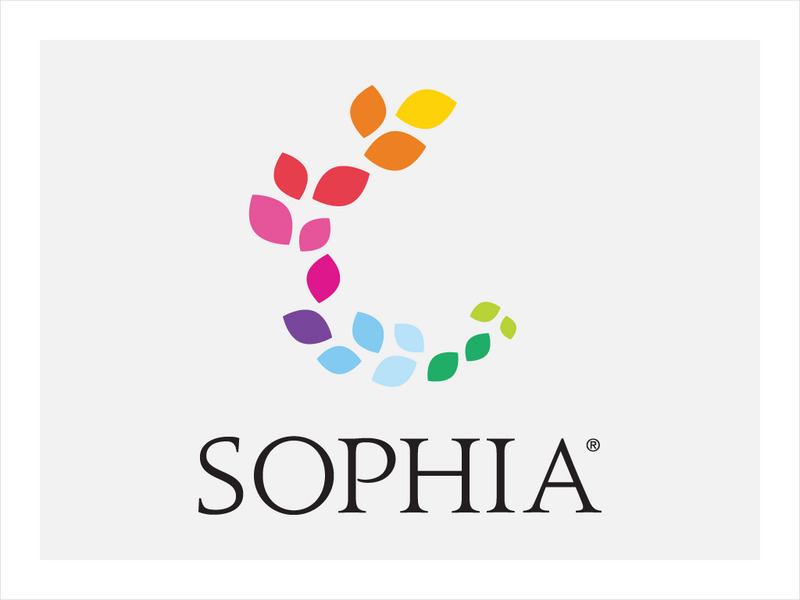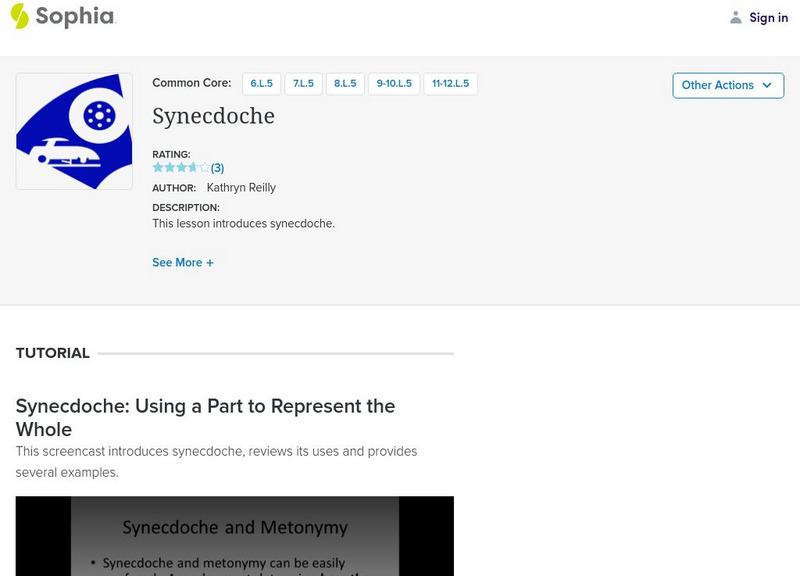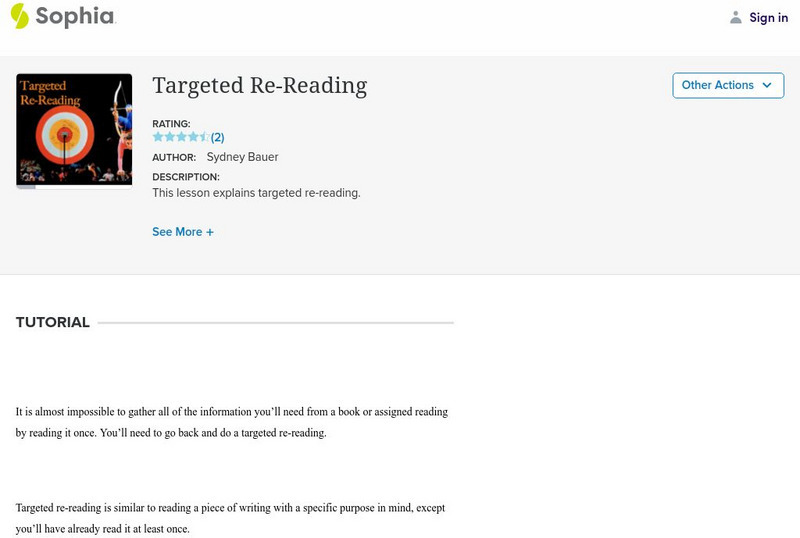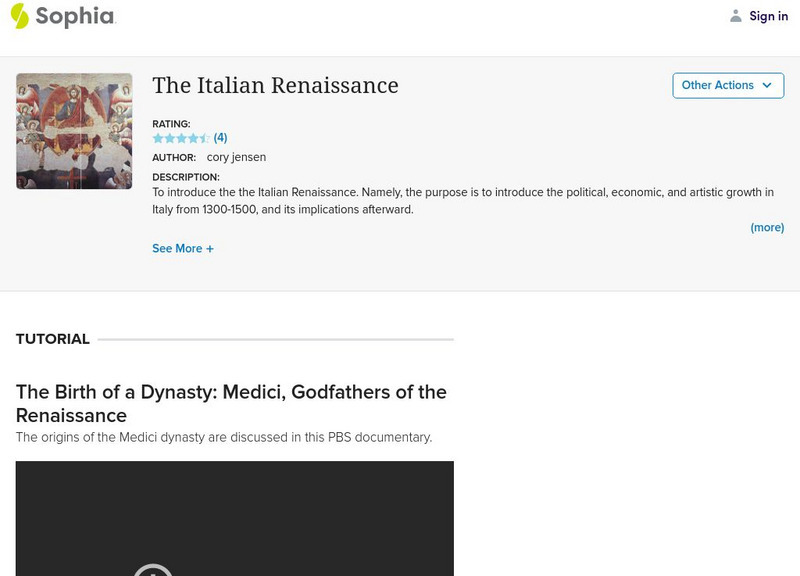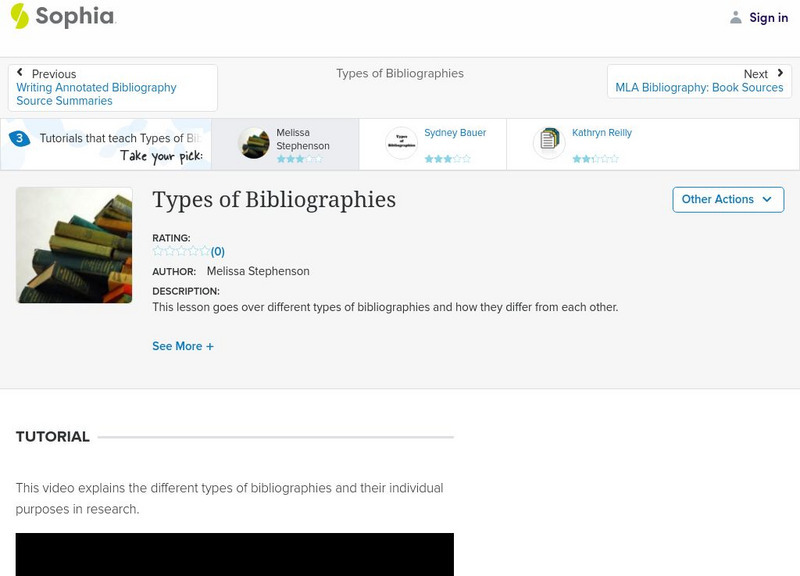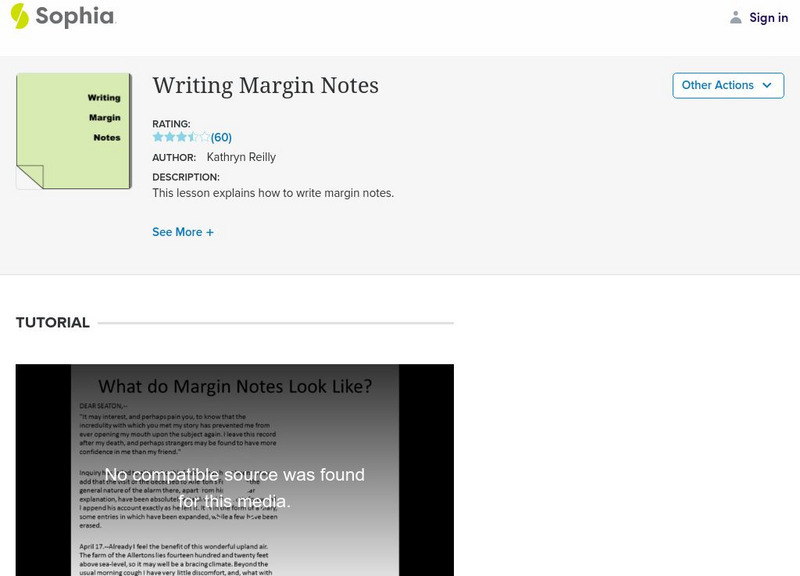Sophia Learning
Sophia: Skimming
This lesson defines skimming, explains how to skim, and details when it is useful. It offers this information in text form and in audio.
Sophia Learning
Sophia: Slash Marks
This video lesson focuses on slash marks. It includes background information; appropriate uses of slash marks in numbers, alternatives, and line breaks in poetry with examples of each; and inappropriate uses of slash marks with examples....
Sophia Learning
Sophia: Suffixes
This tutorial focuses on suffixes using a screencast which provides an introduction to suffixes and then addresses a list of common suffixes, their definitions, how they work with words, and examples. It also tells how to find suffix...
Sophia Learning
Sophia: Supply and Demand Basics
A series of excellent videos that explain the laws of supply and demand, shortage, surplus, equilibrium, slopes, and shifts. Includes a worksheet (PDF, requires Adobe Reader) and videos.
Sophia Learning
Sophia: Supporting Details
This tutorial uses three videos to teach how to add appropriate supporting details to writing. Video 1 discusses why, how, and where to use supporting details in an argumentative paper and the different types of supporting details. Video...
Sophia Learning
Sophia: Synecdoche
This video lesson focuses on the literary device synecdoche, using a part to represent the whole idea or object. It defines the term, compares it to metaphor and metonymy, and offers common and literary examples.
Sophia Learning
Sophia: Targeted Re Reading
This lesson defines and explains how to do targeted re-reading and provides two literary examples. It offers this information in both text and audio formats.
Sophia Learning
Sophia: The Big 3: Introduction, Body, Conclusion
This tutorial begins with a YouTube video of a brief description of the process of writing an essay using geometric shapes to explain each section. The rest is informational text using an amusing school protest as the topic example to...
Sophia Learning
Sophia: The Impact of Imagery
This lesson focuses on the impact of imagery in writing by adding "umph" to the text and engaging the audiences' five senses. It uses an example of a passage from "Wuthering Heights" and then the same passage with most of the imagery...
Sophia Learning
Sophia: The Italian Renaissance
A series of resources with follow up questions created to introduce students to the Italian Renaissance period and its implications afterward. [55:24]
Sophia Learning
Sophia: The Passive Voice
This screencast [2:25] defines passive voice, offers reasons for its use, explains how to write using it, and provides examples throughout. It also offers links to more information about passive voice.
Sophia Learning
Sophia: The Passive Voice vs the Active Voice
This screencast focuses on voice including the difference between active and passive voice, why active voice is preferred, and when it is acceptable to use passive voice. Links to more resources are also provided. Real Player is required
Sophia Learning
Sophia: The Rise of the Roman Empire
Created to teach students of the 21st century, SOPHIA is bringing the Roman Empire straight to your fingertips. Become the commander of your own learning experiences as you take part in this interactive lesson
Sophia Learning
Sophia: Religion: African Methodist Episcopal Church
Created to teach students of the 21st century, SOPHIA is bringing the African Methodist Episcopal Church straight to your fingertips. Become the commander of your own learning experiences as you take part in this interactive lesson.
Sophia Learning
Sophia: Moral Decision Making in Tim O'brien's "On the Rainy River"
Created to teach students of the 21st century, SOPHIA is bringing lesson plans straight to your fingertips. Become the commander of your own teaching experiences as teach this lesson regarding Tim O'Brien's short story "On the Rainy River."
Sophia Learning
Sophia: Transition Words
This tutorial focuses on the use of transition words in writing. It provides 3 videos: the first offers a list of contrasting transition words signaling a change in reasoning with examples; the second provides a list of transitions...
Sophia Learning
Sophia: Types of Bibliographies
This lesson provides a review of the 5 types of bibliographies: general bibliography, annotated bibliography, working bibliography, MLA works cited, and APA reference page. It discusses the similarities of all bibliographies, the...
Sophia Learning
Sophia: Types of Bibliographies
This video lesson focuses on types of bibliographies, their purposes, and similarities and differences. It lists and explains the 4 types of bibliographies: bibliography, annotated bibliography, working bibliography, and Works Cited (MLA...
Sophia Learning
Sophia: What Are Empirical Questions?
Created to teach students of the 21st century, SOPHIA is bringing the concept of empirical questions straight to your fingertips within this interactive lesson. [13:36]
Sophia Learning
Sophia: Writing Effective Topic Sentences
This tutorial focuses on the purposes of topic sentences and how to write effective ones. It provides 2 videos: the first reviews the two purposes of a topic sentence, and the second shows how to write an effective topic sentence. Real...
Sophia Learning
Sophia: Writing Margin Notes
This video lesson focuses on margin notes including the definition, purpose, how to write, what to include, and a literary example showing what they look like. Real Player is required.
Sophia Learning
Sophia: Science Tutorials: Accuracy and Precision
Created to teach students of the 21st century, SOPHIA is bringing the chemistry of accuracy and precision straight to your fingertips. Become the commander of your own learning experiences as you take part in this interactive tutorial.
Sophia Learning
Sophia: Adjective Clauses
This video lesson focuses on adjective clauses; it defines them, lists their signal words, and tells what questions they answer. It also explains restrictive and non-restrictive adjective clauses and how to punctuate them. Real Player is...
Sophia Learning
Sophia: Adjective Clauses and Relative Pronouns
This screencast defines adjective clauses and relative pronouns. It provides a chart showing which relative pronoun to use with subjective, objective, and possessive case based on what the pronoun is referencing.

